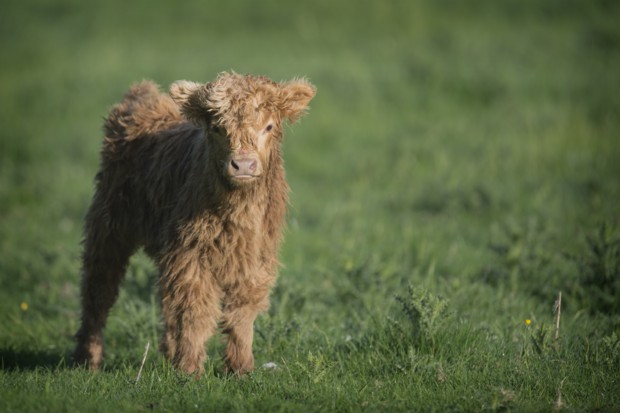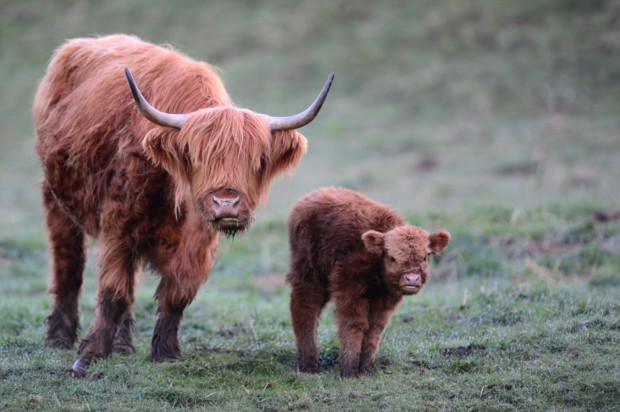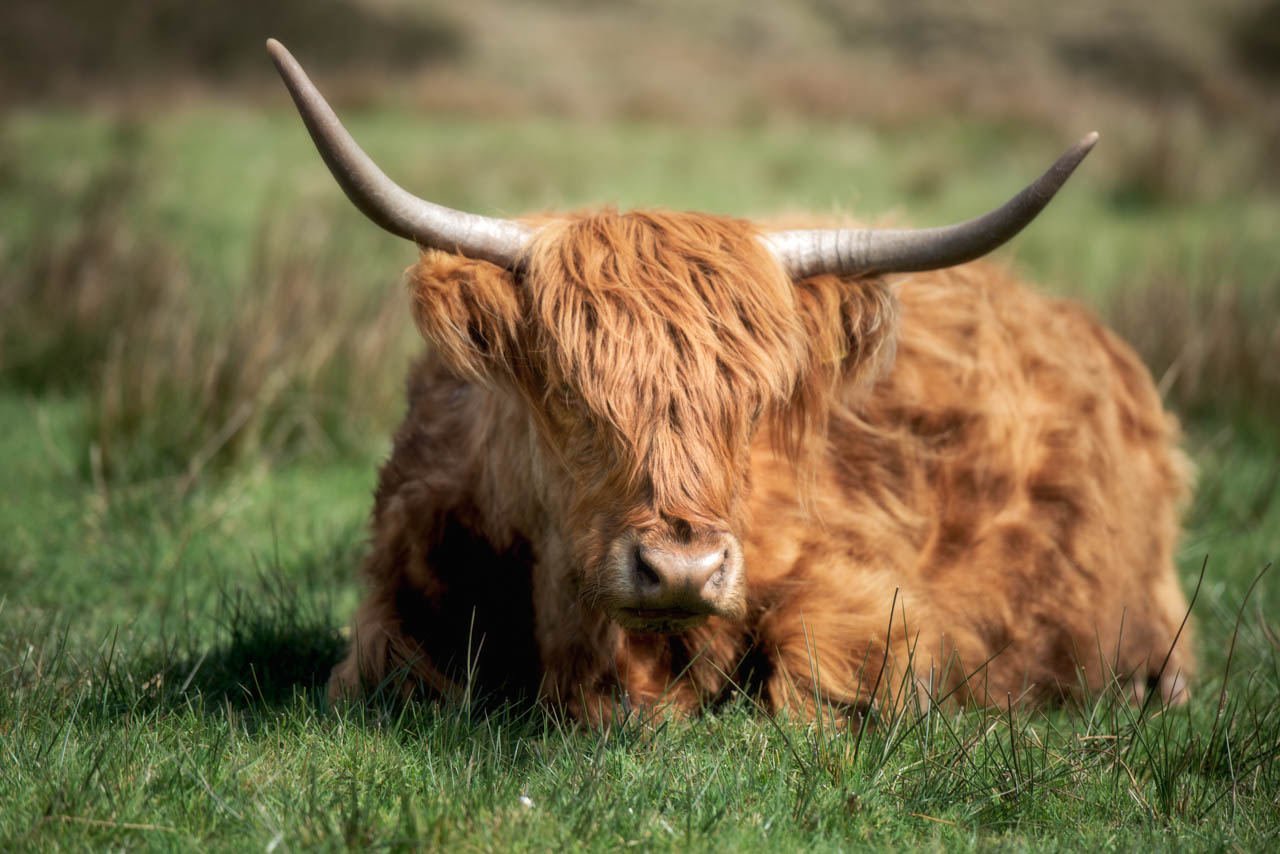The Peak District Highland Cattle are here, an ancient cattle breed whose ancestry dates back generations. Easily identified by long, thick, glossy hair and their amazing long fringes which protect their view of the world, those impressively undulated horns give this wonderful animal it’s most distinctive feature.

Peak District Highland Cattle come in five distinctive colours, this shaggy shape is unmistakable grazing amongst lush green pastureland in the White Peak, but more commonly brunching amongst bracken in the wilderness of the Dark Peak. The adults look imposing, but their babies resemble the cutest of teddy bears.
Their ancestry can be traced back by the Highland Cattle Society’s Herd Book, which was first published in 1885. The breed was developed in the Scottish Highlands and the Western Isles of Scotland, but breeding stock has been exported to the rest of the world, especially North America and Australia since the early 20th century. They developed two sets of stock, one originally black and the other reddish brown.

The five colours officially recognised are red, yellow, black, dun and brindle and many of them are named in Scots Gaelic. The thick coat is not cosmetic or preserved as a breed for appearance. It has to protect the animal from the harshest of climates. The dossan or ‘fringe,’ deters flies and insects whilst the horns are defensive weapons, formidable against ancient foe from times long past. They fiercely protect their calves and from sparring with other adults.

In our modern day Peak District it’s rare for the cattle to have to revert to ancient natural instinct as most are domesticated animals but cattlemen tell tales of highlanders hiding young calves whilst they graze or refusing to walk over parts of the moor which was earlier claimed by another cow clan. They think it could also be a reason for the cows to still bear calves in their late teens. The beef is so low in cholesterol and is comparative to chicken. It is leaner the most beef because Highlands get most of their insulation from their thick shaggy hair rather than subcutaneous fat.

Surviving in climates through the north where other cattle breeds may perish, highland cattle have a unique and natural ability to convert poor grazing efficiently, thus making them a real contribution and asset to their wild habitat. This is yet another reason why they can be found throughout the world in very desolate places such as the Andes and Hebrides. Their hair provides protection from harsh climates and their skill for browsing for food enables them to survive in steep mountain areas. They both graze and browse and eat plants which many other cattle avoid.
As a rule the head is proportionate to the body and is very broad between the eyes but short from the eyes to the point of the muzzle. It snows has very wide distended nostrils. The forelock between the eyes is wide, long and bushy and the eyes are very bright, chocolate brown and glossy with the most amazing long eyelashes a girl would be envious of.

The most noble and worthy feature of the Peak District Highland Cattle for breeders is of course the horns and in bulls, the horns should be strong and come out level to the head, slightly inclining forwards but also slightly rising towards the points. The horns of the cow should come square out from the head than in the male and somewhat longer and have a rich reddish appearance to the very tips. In all cases, the horns of the Highlanders give the animal a real stamp of nobility, but also one of ferocity as well. On the one hand, you want to run the other way when they catch your eye, but on the other you will probably want to do nothing more than to go over and give it a hug!

The hair of the Highlanders is unmistakable and is long and gracefully waved, very much as in what dog breeders denote in wavy coated retrievers. If it curls, this is classed as a fault, but is one which has become too common in some herds. It is thought to have come about with the breeding and a growing desire to make Highlanders big from feeding higher and housing them more. The more they graze in more exposed areas, the greater the profusion of all that shaggy hair, and the less its tendency to curl. The reason Highland cattle are so much better haired than mainland cattle, is because they are never housed in winter.

The Highland Cattle Registry call a group of Highlands a ‘fold’ rather than a herd, and they are also known as ‘kyloes’ in Scots. It is said that a good herd should possess a mixture of colours and the thickness of the skin, comes in for a considerable amount of attention but the Highlanders has been adapted by nature to withstand this great exposure, so don’t ever feel sorry for them, standing dripping amongst the Peak District mists and drizzle, because they are perfectly capable of looking after themselves!